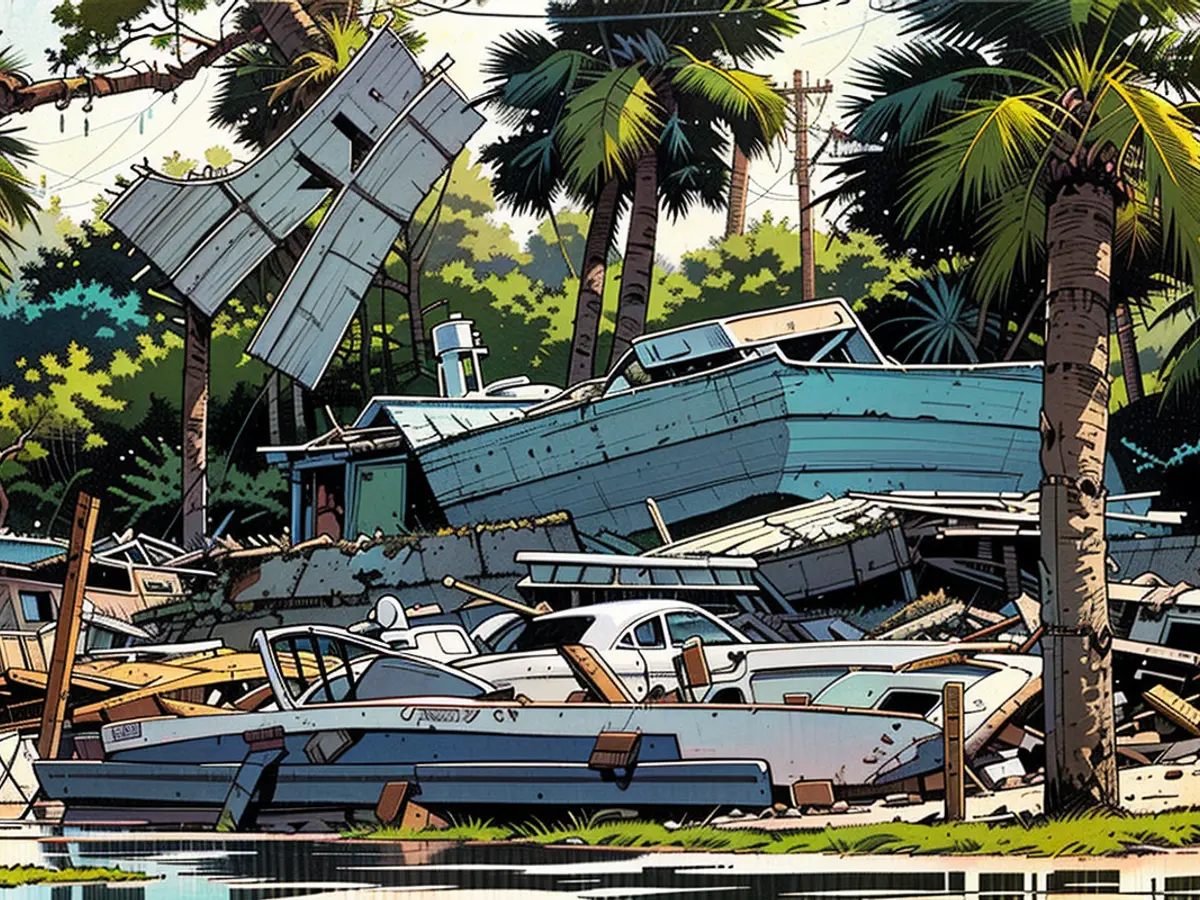Storm - "Beryl" weakens to a tropical storm in Texas
Tropical Storm "Beryl" lost strength after making landfall in Texas and is no longer a hurricane. With heavy rain and wind speeds of up to 110 kilometers per hour, "Beryl" is now making its way inland. The US Hurricane Center warned of "life-threatening storm surges" along the Gulf Coast. The storm is moving at a speed of 21 kilometers per hour towards the northeast. According to media reports, at least two people have died.
"Beryl" made landfall near the Texas community of Matagorda early Monday morning (local time), about 130 kilometers southwest of Houston. In Houston and surrounding areas, more than two million households were without power at one point. The White House announced that US President Joe Biden is being regularly briefed on the situation. We are in close contact with local authorities. "Residents in the affected areas should stay away from the roads and follow the instructions of local authorities," warned Texas Governor Greg Abbott.
Weather Service Warns of Tornados
In the threatened areas along the Texas coast, some residents and shopkeepers have reportedly boarded up their windows with plywood. However, many people did not follow the authorities' call to evacuate. According to reports, "Beryl" will move over East Texas and Arkansas later on Monday and Tuesday. The US Weather Service issued a tornado warning for certain areas. Meteorologists expect "Beryl" to further weaken in the coming hours.
"Beryl" has had the people in the region on edge for more than a week, ever since it formed in the southeastern Caribbean at the end of June. At one point, it reached the highest hurricane strength, Category 5, with sustained winds of over 251 kilometers per hour. It passed over several islands in the Lesser Antilles, made landfall on the eastern Mexican coast of Yucatan, and then moved through the Gulf of Mexico.
Damage in Mexico and Devastation in the Caribbean
"Beryl" uprooted trees in Mexico and threw street signs around. In many parts of the popular vacation region between Tulum and Cancun, the power went out.
In the Caribbean, at least eleven people have died, including three in Venezuela. According to government reports, more than 90 percent of the houses in Grenada and St. Vincent and the Grenadines were damaged or destroyed. Jamaica also experienced extensive damage and widespread power outages in some areas.
Climate Change Fuels Strong Storms like "Beryl"
Never before in the Atlantic hurricane season, which runs from June to November, had such a powerful storm struck so early. Warmer sea water due to climate change makes strong hurricanes more likely.
The strength of a hurricane is measured on a scale developed by meteorologists Herbert Saffir and Robert Simpson: A hurricane of Category 1 reaches winds of up to 153 kilometers per hour. Category 2 applies up to 177 kilometers per hour, Category 3 up to 208 kilometers per hour, and Category 4 up to 251 kilometers per hour.
Devastating damages threaten with a Category 5 hurricane rotating at winds exceeding 251 kilometers per hour. Tropical cyclones usually gain strength during their journey over the sea. However, they quickly lose power over land due to the lack of supply of warm moisture-laden air masses.
- Despite the weakening of "Beryl", concerns remain in the US President Joe Biden's administration about potential damage from the storm in areas like Texas and Houston.
- The decline in electricity supply in Texas as a result of "Beryl" has led to discussions about the region's dependence on renewable energy sources, such as wind and solar power.
- The storm has forced Governor Greg Abbott of Texas to consider a request for federal aid to help restore power and infrastructure damaged by "Beryl".
- In a meeting at the White House, representatives from the US Environmental Protection Agency (EPA) and the Federal Emergency Management Agency (FEMA) discussed the environmental and humanitarian implications of the storm in Texas and the Caribbean.
- After the storm, some environmentalists and politicians have argued that the US should invest more in coastal infrastructure and energy resilience to better prepare for future tropical storms like "Beryl".
- In the aftermath of the storm, experts from the National Oceanic and Atmospheric Administration (NOAA) began investigating the impact of "Beryl" on the Gulf of Mexico's marine ecosystems and the coastline.
- The storm has also sparked discussions in Venezuela about the government's response to natural disasters, with critics accusing the government of not providing adequate aid to victims of previous hurricanes and tropical storms.
- As "Beryl" moved towards landfall in Texas, many residents in Houston and the surrounding areas sought refuge in community centers and shelters, with some fleeing to neighboring states like Oklahoma and Louisiana.
- In response to the storm, international aid agencies and non-governmental organizations have mobilized resources to provide assistance to affected communities in Mexico, the Caribbean, and the USA.
- Climate scientists argue that the frequency and intensity of storms like "Beryl" are likely to increase as a result of climate change, urging global leaders to take decisive action to reduce greenhouse gas emissions and mitigate the impacts of extreme weather events.








